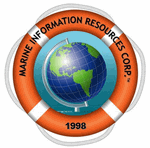Session
3
Start Date
7-12-2017 1:15 PM
End Date
7-12-2017 2:00 PM
Description
Developed by Liquid Robotics, Inc., Wave Gliders® (WGs) use wave energy for propulsion through the synergistic alternating thrust of wave action on the floating vehicle and mechanical wings 6 m below the vehicle. WGs provide dynamic environmental monitoring in the maritime environment with weeks-tomonths-long deployments using solar panels to power sensors, and satellite and cell communication channels for data delivery. Some data is transmitted real-time or in bulk at more infrequent intervals, while other data is archived on-board for extraction after a mission.
Example field programs include: wave, ocean, and PBL measurements in tropical cyclones; algae bloom monitoring; satellite ground truthing; active and passive acoustics; marine mammal monitoring; carbon cycle studies; geodesy marine magnetics; hydrocarbon seep mapping; and marine surveillance. Instrumentation to support these missions are different combinations of the following: anemometer; towfish; fluorometer; ADCP; acoustic modems; acoustic recorders; directional ocean wave sensor; CTD-DO; magnetometer; and camera.
The presentation overviews recent WG field programs, including the 2014 Mississippi State University mission. MSU deployed 3 WGS from Aug.-Nov. 2014, validating the instruments during buoy loitering exercises for surface meteorology, SST, and wave data. MSU also intercepted Tropical Storm Hanna’s fringes.
Abstract for Overview of Recent Wave Glider Field Program
Included in
Session 3 Presentation - An Overview of Recent Wave Glider® Field Program
Developed by Liquid Robotics, Inc., Wave Gliders® (WGs) use wave energy for propulsion through the synergistic alternating thrust of wave action on the floating vehicle and mechanical wings 6 m below the vehicle. WGs provide dynamic environmental monitoring in the maritime environment with weeks-tomonths-long deployments using solar panels to power sensors, and satellite and cell communication channels for data delivery. Some data is transmitted real-time or in bulk at more infrequent intervals, while other data is archived on-board for extraction after a mission.
Example field programs include: wave, ocean, and PBL measurements in tropical cyclones; algae bloom monitoring; satellite ground truthing; active and passive acoustics; marine mammal monitoring; carbon cycle studies; geodesy marine magnetics; hydrocarbon seep mapping; and marine surveillance. Instrumentation to support these missions are different combinations of the following: anemometer; towfish; fluorometer; ADCP; acoustic modems; acoustic recorders; directional ocean wave sensor; CTD-DO; magnetometer; and camera.
The presentation overviews recent WG field programs, including the 2014 Mississippi State University mission. MSU deployed 3 WGS from Aug.-Nov. 2014, validating the instruments during buoy loitering exercises for surface meteorology, SST, and wave data. MSU also intercepted Tropical Storm Hanna’s fringes.




Comments
Funded by the Sandy Supplemental Internal Competition for Instruments and Observing Systems under NOAA Grant NA14OAR483012